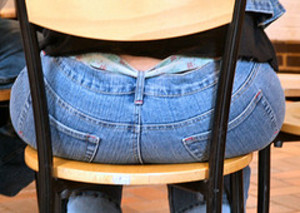When I had my baby, I was a sworn Baby Whisperer (Tracy Hogg) follower. Tracy Hogg’s three-hour E.A.S.Y. routine (eat, activity, sleep, “your time”) made a lot of sense to me, and as a straight Type A personality, having my baby on a semi-structured schedule from the beginning alleviated a lot of my new parent anxiety. There was just one problem. The E.A.S.Y. routine was based on the premise that my baby would take 90-minute naps. And around the time she turned three months old, my baby would not take longer than 45-minute naps.
The authors of the Babywise books refer to this phenomenon as the “45-Minute Intruder.” Long about the end of a baby’s sleep cycle of around 40 minutes, two things can occur. The first is that the baby successfully transitions through to the next sleep cycle. The other is that the baby wakes up and is unable to go back to sleep on his or her own.
There are many soothing tricks, environmental tweaks, and routine techniques all the experts suggest to help the baby make it onto the next sleep cycle, but all failed for my kid. And so, I had to stop trying to fix her nap schedule, and rather, embrace it. Routines can still work, even when the naps that are part of it end up shorter than average. Here are the hidden benefits to my baby’s short naps I’ve discovered.
1. Short naps make for easier daytime travel.
My baby’s tendency toward short naps makes us more flexible with our daytime travel. If she were a one- to two-hour napper, I imagine I would have to build my schedule around her naps so that she could be in her bed for the duration. Because her naps are so short, we can often plan trips so that she catches her 45-minute snooze in the car seat, or she’ll sleep on me in the Moby wrap while we’re out and about. I’m not sure whether those techniques would work if she needed to sleep for a longer period of time.
2. Short naps have a predictable end.
My understanding of longer naps is that they vary in length. The same child might sleep one to two hours during the same time period on any given day. Since my baby only makes it through one sleep cycle, I can tell you almost to the minute exactly when she’ll wake up after she goes down. This helps me plan my day and my use of nap times accordingly.
3. Short naps coordinate with our eating schedule.
My baby, although five months old, still takes a bottle every three hours. Being awake and playing for two hours, sleeping for 45 minutes or so, and then getting up for a bottle actually works really well for us. She gets in the sleep and caloric intake she needs, all while respecting her optimal amount of awake-time.
4. Short naps work for her.
Perhaps the most important point is that my baby thrives on her short-nap schedule. She successfully recharges with each of her 45-minute naps. She does not wake up grumpy – she’s bright-eyed and ready to play. She’s a calm, happy, alert baby who also happens to sleep through the night. In the end, she gets the appropriate amount of sleep during the day, even if it doesn’t take place in the ideal consolidated schedule the experts recommend.
And so, I embrace the 45-minute intruder as he sets up camp in our lives. While I might hope that he one day moves on and leaves my baby with a more consolidated nap schedule, when it comes to sleep, we’ll take what we can get!
More from this mom:
5 Lessons Learned on Maternity Leave
Getting Your Baby to Nap: Hints from a New Mom
Mom of an Infant: 8 Simple Victories that Make My Day





